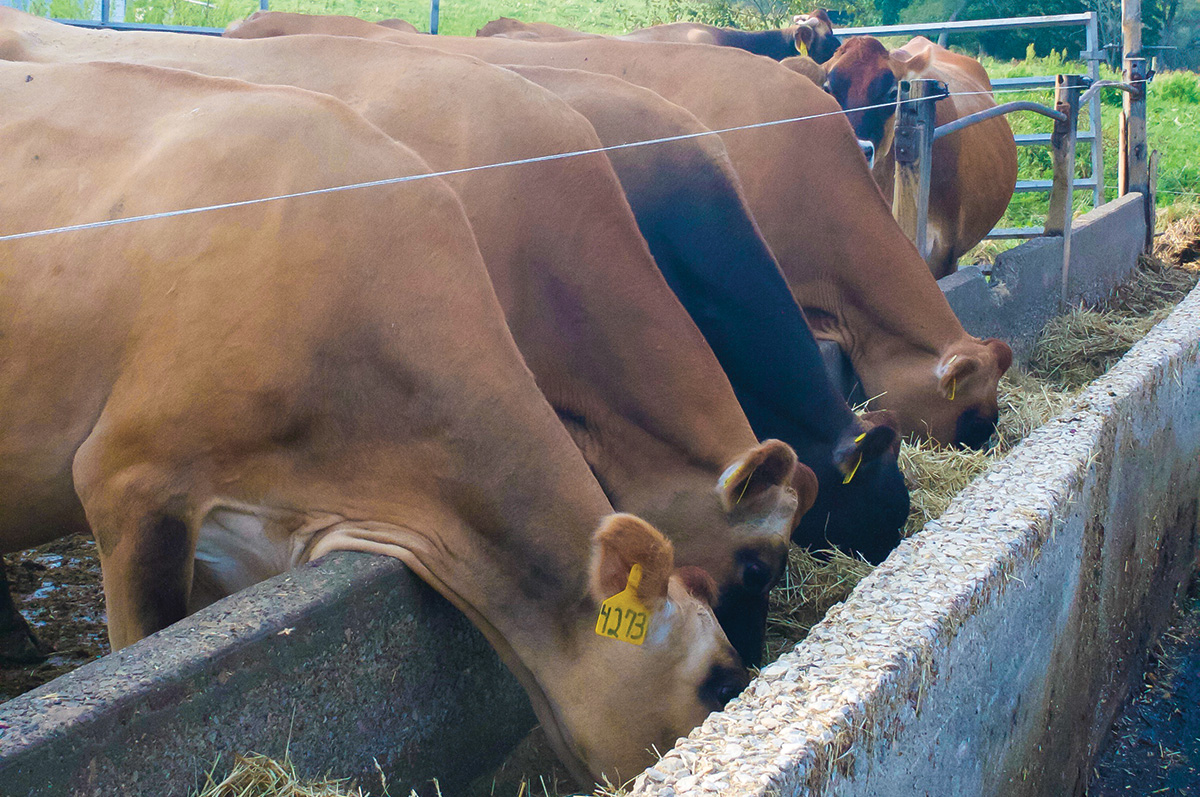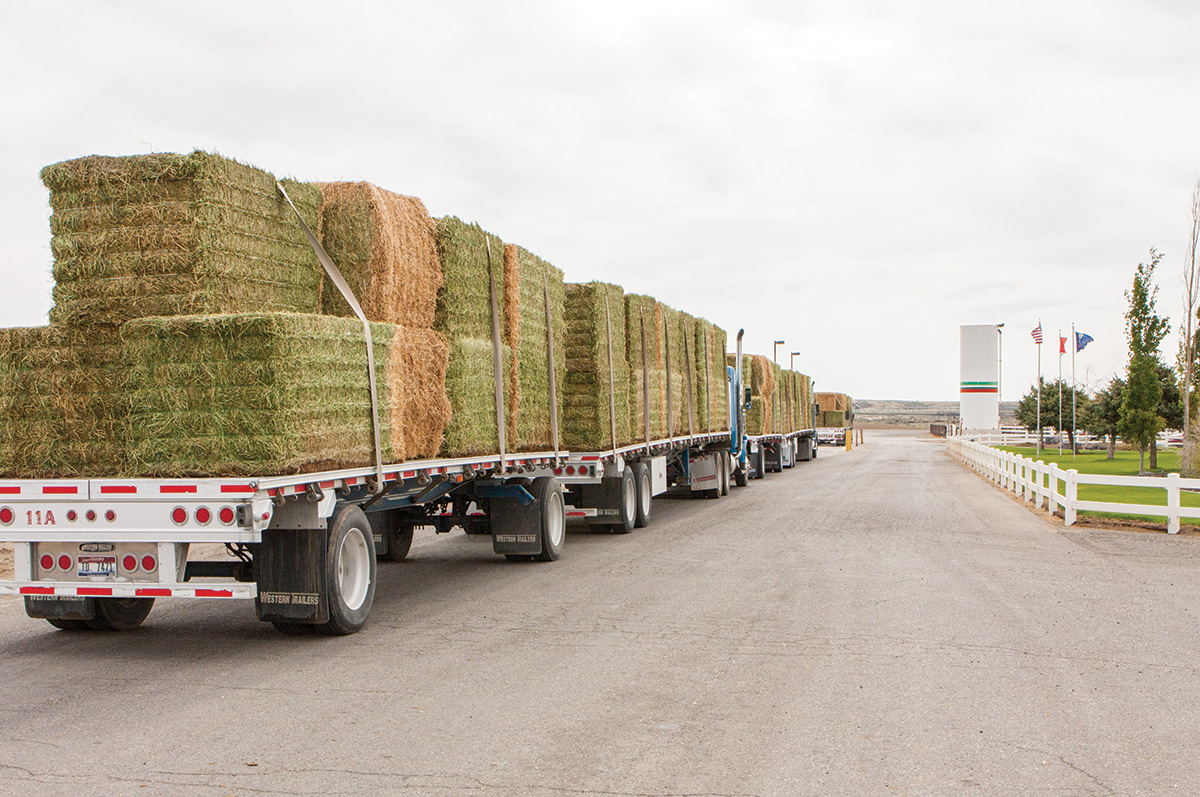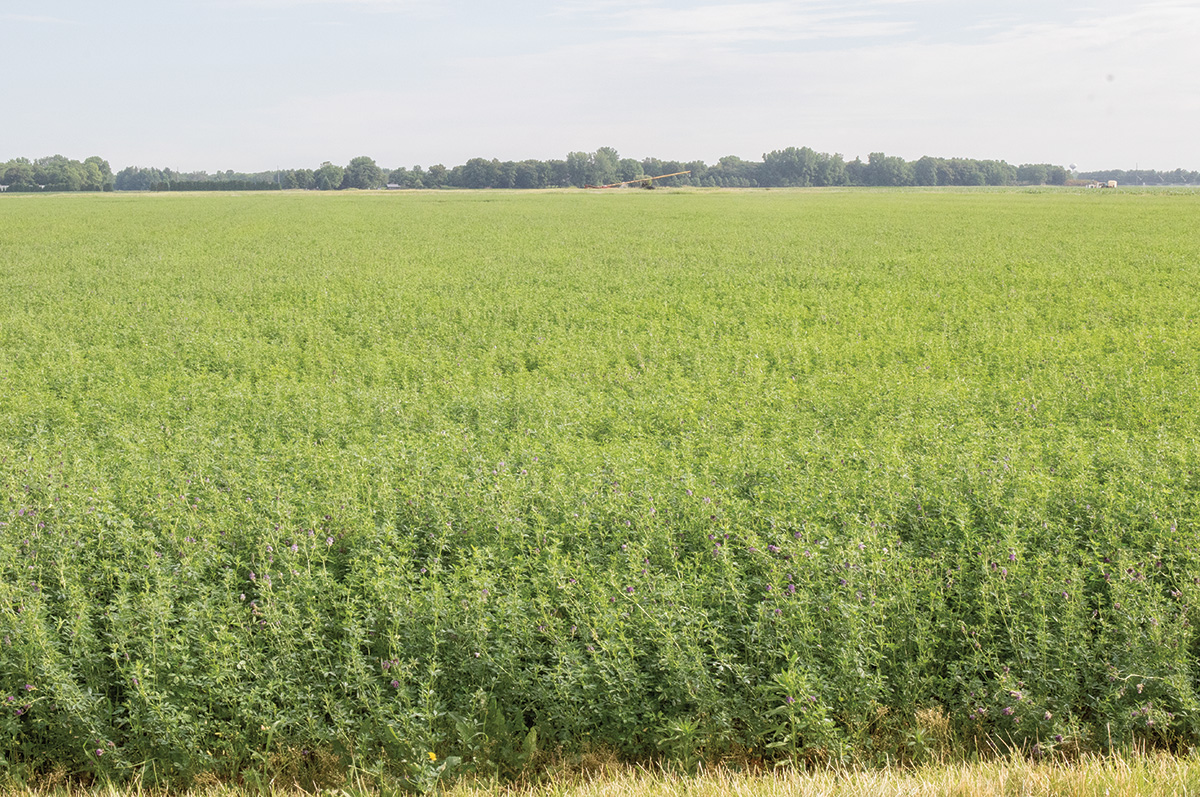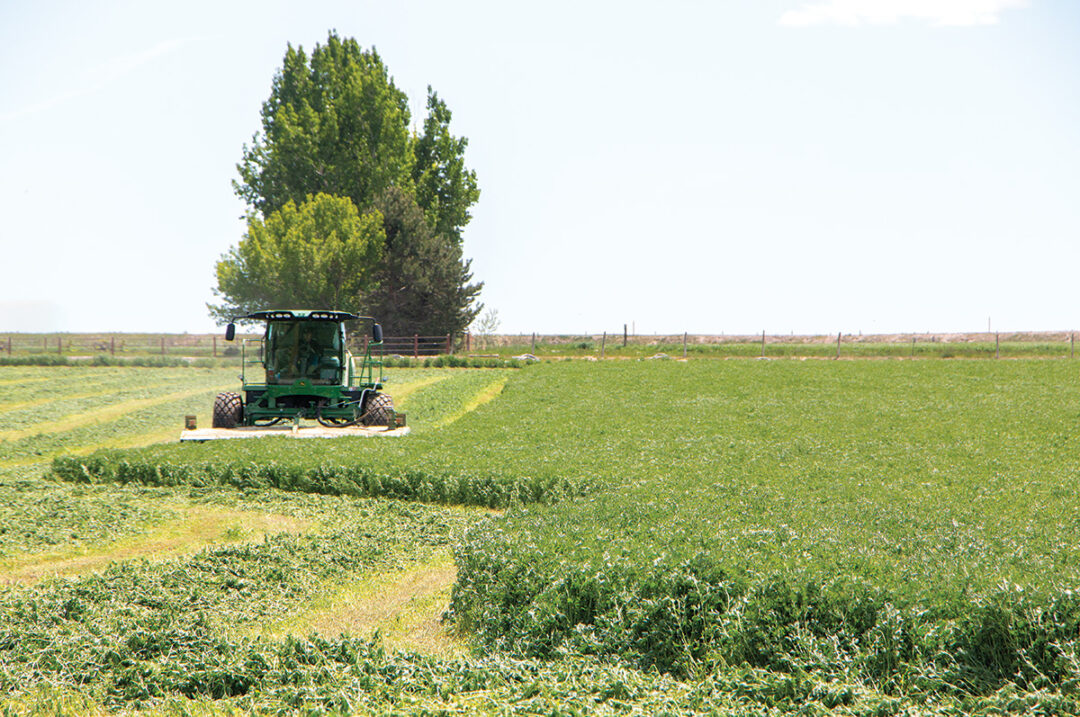Alfalfa, often crowned the “queen of forages,” has long reigned supreme in the world of agriculture, commanding respect and admiration from hay producers and dairy farmers alike. This regal crop not only offers nutritional benefits but also contributes significantly to economic stability and environmental sustainability. The crop's adaptability allows it to be grown in a wide range of environments, from temperate to arid regions, making it accessible to farmers across different geographic locations.
Over the years, alfalfa has established a true “queen's court,” a network of benefits and advantages that support and enhance the agricultural industry. This article explores the multifaceted advantages of alfalfa, illustrating why it remains an indispensable asset for hay producers and dairy farmers.
Nutritional benefits
One of the primary reasons alfalfa is favored by dairy farmers is its exceptional nutritional profile. Alfalfa is rich in protein, vitamins and minerals, making it an ideal feed for dairy cattle. It is a great source of minerals such as calcium, magnesium and potassium, which are crucial for the health and productivity of dairy cows. The high crude protein (CP) content and amino acid composition in alfalfa are critical for the growth and development of young animals and enhance milk production in lactating cows.
Additionally, alfalfa's high fiber content promotes healthy digestion and decreases the risk of issues like acidosis in livestock. New research has shown that the rumen-undegradable protein (RUP) of alfalfa is actually undervalued, and there is likely more reaching the small intestine than modeled in dairy ration-balancing programs. This is critical for efficient nitrogen utilization of feedstuffs, optimizing livestock production.

Staff photo.
Improved milk production
The quality of feed directly impacts milk production and quality in dairy farming. Alfalfa, with its superior nutritional content, plays a significant role in improving both. Studies have shown that dairy cows fed with alfalfa produce more milk with higher butterfat content compared to those fed solely with other forages. The high digestibility of alfalfa ensures that cows can efficiently convert the feed into energy, leading to increased milk yield potential.
A recent study by the Miner Institute (2022) concluded that feeding a diet with a forage ratio between 30-70 to 50-50 alfalfa to corn silage optimized milk components and yield. Furthermore, new alfalfa technology allows for more consistent forage nutrient quality, reducing fluctuations in milk production and quality.
Economic benefits
From an economic perspective, alfalfa offers significant advantages for both alfalfa producers and dairy farmers. For alfalfa producers, alfalfa has high yield potential with multiple harvests per year, providing a steady income stream even after significant weather events. Its resilience and adaptability to various climatic conditions make it a reliable crop choice for many growers in the U.S.
Diversifying a portfolio with forage crops like alfalfa can help improve overall profitability. In years such as 2024, where corn prices are at their lowest levels in three years, having a forage crop can help balance a farm's financials, as alfalfa prices have been relatively steady in most areas during the same time period. They complement each other as their prices often fluctuate inversely.
Dairy farmers may benefit from the reduced feed costs associated with alfalfa's high nutritional value. By incorporating alfalfa into their feeding regimen, dairy farmers can reduce their reliance on feed supplements. Additionally, the milk production and quality potential associated with alfalfa feeding can lead to higher profits in the dairy industry.
There are also agronomic benefits to consider through an economic lens. Alfalfa offers a nitrogen credit to the following crop. In many cases, it can provide 150 to 200 pounds of nitrogen. In the current market, where nitrogen is valued around 60 cents per pound, this would equate to a $90 to $120 per acre benefit. This also extends into year two out of alfalfa, where we can generally expect about 50% of that credit to be available, or approximately 75 to 100 pounds of nitrogen in the soil.
Studies have shown that crops following an alfalfa rotation yield higher than crops that were in continuous production. In Wisconsin, research has shown about a 10% boost in corn yield in corn fields following alfalfa versus corn fields that had previously already been in corn. Taking the average corn production in the U.S. in 2023 of 177 bushels, this could mean approximately 17 additional bushels, or another $66 per acre. Adding just this benefit and the nitrogen benefit alone could lead to $267 per acre over two years.

Staff photo.
Risk management
There are several risk management programs available to alfalfa growers. For instance, USDA and NRCS programs offer incentives for alfalfa growers. In the Midwest, NRCS has launched a pilot program offering growers anywhere from $50 to $60 per acre to include alfalfa in rotations. This program is expected to be launched nationally in 2025. In California, farmers can harvest two-thirds of their crop in the spring, shut off water during the summer and potentially get two to three harvests in September, earning up to $600 per acre for water conservation.
Environmental benefits
When it comes to sustainable farming practices, alfalfa provides several key benefits. Its nitrogen-fixing ability reduces the need for chemical fertilizers, minimizing the risk of water pollution from runoff. Alfalfa's deep-rooting system helps sequester carbon, mitigating the effects of greenhouse gas emissions, as well as sequestering excess nutrients that may be present in the soil. The crop's ability to reduce soil erosion and improve water infiltration also contributes to better watershed management.
Alfalfa is a leguminous plant, meaning it can fix atmospheric nitrogen into the soil through a symbiotic relationship with rhizobium bacteria. This natural nitrogen-fixing ability reduces the need for synthetic nitrogen fertilizers, promoting sustainable farming practices. By enhancing soil fertility, alfalfa contributes to healthier and more productive subsequent crops. Crop rotation involving alfalfa can break pest and disease cycles, reduce soil erosion and improve soil structure. The deep-rooting system of alfalfa also helps loosen the soil, allowing better water infiltration and root penetration for other crops.
Alfalfa helps break pest cycles as it doesn't host the same pests as small grains or grasses. Its natural growth cycle supports different weed species and insects, reducing the need for pesticides. Research has shown that alfalfa fields can host over 500 species of insects, which is great for biodiversity, supporting wildlife such as waterfowl, rodents and larger mammals like deer and elk.
Long live the queen
There is a reason alfalfa earned the title of “queen of forages” in the first place, and it continues to demonstrate its supreme value in the agricultural realm today. Alfalfa's “queen's court” of benefits extends far and wide, offering exceptional nutritional profiles, soil enrichment, economic advantages and environmental sustainability. As the agricultural industry evolves, alfalfa's reign as the queen of forages is poised to continue, bringing prosperity and stability to those who grow it.

Staff photo.









